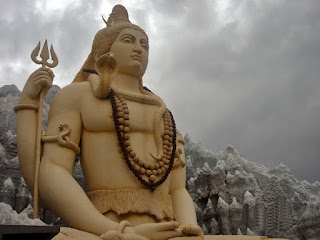HEROIN DANGER
Q1. What is heroin?
 ANS. The short-term effects of heroin abuse appear soon after a single dose and disappear in a few hours. After an injection of heroin, the user reports feeling a surge of euphoria (“rush”) accompanied by a warm flushing of the skin, a dry mouth, and heavy extremities. Following this initial euphoria, the user goes “on the nod,” an alternately wakeful and drowsy state. Mental functioning becomes clouded due to the depression of the central nervous system. Other effects included slowed and slurred speech, slow gait, constricted pupils, droopy eyelids, impaired night vision, vomiting, constipation.
ANS. The short-term effects of heroin abuse appear soon after a single dose and disappear in a few hours. After an injection of heroin, the user reports feeling a surge of euphoria (“rush”) accompanied by a warm flushing of the skin, a dry mouth, and heavy extremities. Following this initial euphoria, the user goes “on the nod,” an alternately wakeful and drowsy state. Mental functioning becomes clouded due to the depression of the central nervous system. Other effects included slowed and slurred speech, slow gait, constricted pupils, droopy eyelids, impaired night vision, vomiting, constipation.
ONE WORD .......VERY HARMFUL...
may god bless you.....please take care.....
thank you for your love....
Q1. What is heroin?
ANS. Heroin (say: her-uh-win) comes from the opium poppy, a type of flower that grows in Asia, Mexico, and South America. Pure heroin is a white powder that tastes really bad. Some heroin is dark brown, and black tar heroin is either sticky or hard and looks like roofing tar.
Heroin belongs to a group of pain-relieving drugs called narcotics. Although certain narcotics such as codeine and morphine are legal if prescribed (given) by doctors to treat pain, such as when someone has surgery or breaks a bone, heroin is an illegal narcotic because it is has dangerous side effects and is very addictive.
Q2.How is it used?
ANS. Heroin can be used in a variety of ways, depending on user
preference and the purity of the drug.
preference and the purity of the drug.
1. Heroin can be injected into a vein (“mainlining”).
2. Injected into a muscle.
3. Smoked in a water pipe or standard pipe, mixed in a marijuana joint or regular cigarette, inhaled as smoke through a straw, known as “chasing the dragon,” snorted as powder via the nose.
Q3. Other common names?
ANS. Horse, smack, big H, black tar, caballo (Spanish), 8-ball (heroin mixed with crack cocaine), junk, TNT
Q4.What are its short-term effects?
 ANS. The short-term effects of heroin abuse appear soon after a single dose and disappear in a few hours. After an injection of heroin, the user reports feeling a surge of euphoria (“rush”) accompanied by a warm flushing of the skin, a dry mouth, and heavy extremities. Following this initial euphoria, the user goes “on the nod,” an alternately wakeful and drowsy state. Mental functioning becomes clouded due to the depression of the central nervous system. Other effects included slowed and slurred speech, slow gait, constricted pupils, droopy eyelids, impaired night vision, vomiting, constipation.
ANS. The short-term effects of heroin abuse appear soon after a single dose and disappear in a few hours. After an injection of heroin, the user reports feeling a surge of euphoria (“rush”) accompanied by a warm flushing of the skin, a dry mouth, and heavy extremities. Following this initial euphoria, the user goes “on the nod,” an alternately wakeful and drowsy state. Mental functioning becomes clouded due to the depression of the central nervous system. Other effects included slowed and slurred speech, slow gait, constricted pupils, droopy eyelids, impaired night vision, vomiting, constipation.ANS. Long-term effects of heroin appear after repeated use for some period of time. Chronic users may develop collapsed veins, infection of the heart lining and valves, abscesses, cellulites, and liver disease. Pulmonary complications, including various types of pneumonia, may result from the poor health condition of the abuser, as well as from heroin’s depressing effects on respiration. In addition to the effects of the drug itself, street heroin may have additives that do not really dissolve and result in clogging the blood vessels that lead to the lungs, liver, kidneys, or brain. This can cause infection or even death of small patches of cells in vital organs. With regular heroin use, tolerance develops. This means the abuser must use more heroin to achieve the same intensity or effect.
may god bless you.....please take care.....
thank you for your love....

















